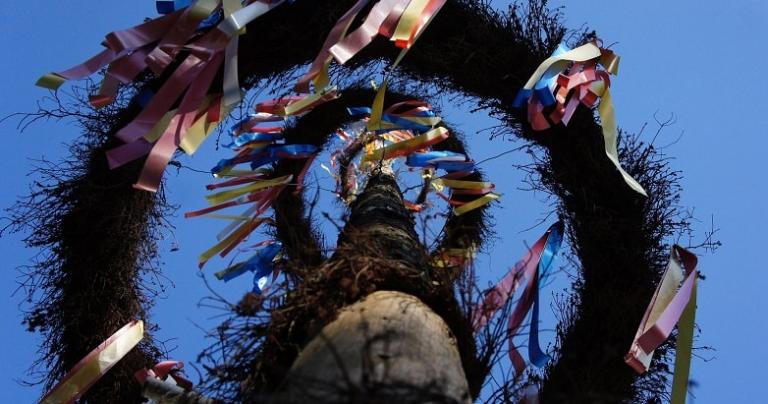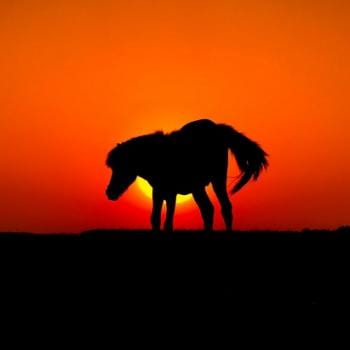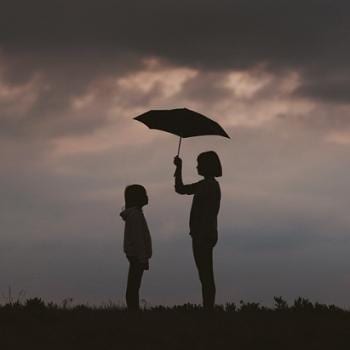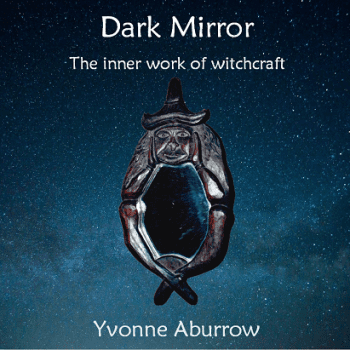Hello, beautiful creatures.
April is drawing to a close, taking with it both its attendant showers and its unseasonably chilly weather, and the flowers promised in May are already starting to put in an appearance. All of this meteorological and botanical wackiness heralds the arrival not only of something actually resembling Spring, but of Beltane, that much-beloved Celtic fire-festival which has been adopted and adapted by Wiccans and other p-word folks. In many ways, it can be seen as Samhain’s opposite number on the Wheel of the Year; where Samhain is a solemn observance of mortality and what lies beyond the gates of Death, Beltane is a celebration of life and, for a great many people, the means by which life comes into being.
That’s right, I’m talking about sex. Again. And you’re not even surprised, because if there’s any occasion suited to talking about sex, Beltane would be it. I mean, what could be more appropriate? It’s a fertility festival, after all! You don’t have to be Fellini to figure out the symbolism of a bunch of people, um, erecting a maypole and dancing around it, right? And, of course, there’s the classic folk rhyme associated with May Day:
Hurray, hurray, the first of May!
Outdoor fucking starts today!
Yes, well. At the risk of sounding like I’m hiding behind the ironically popular social-media game of “Unpopular Opinion” here, I’m going to out myself a bit and confess that, as much as I’m indifferent about most of the Wheel of the Year, I really don’t get along well with Beltane.
Of course, that’s probably not terribly surprising, since I’ve written before about my ambivalent relationship with the Wheel of the Year. However, my feelings of “meh” about Beltane are complicated. They’re tied up with my feelings about sexuality, culture, and the intersection of those things with spiritual practice, both on an intellectual level and on an emotional level rooted in my own experience. If you’ve read my blog for any length of time, you’re aware that I’m sex-positive, but I find a lot of the exuberant “sex-positivity” that runs rampant through much of the Pagan, polytheist, and magical practitioner communities around this time to be… well, a little tin-eared.
Here, I’ll explain.
I remember an outdoor Beltane many years ago, a popular event with the Pagan community in my area. The “official” start of the festivities involved all the men gathering one one side of the ritual field, and all the women gathering at the other. The men had hold of the maypole raised like a battering ram, while the women had hold of the beribboned floral crown which was to sit atop the maypole. The two teams faced off with each other, trading “flirtatious” comments heavy on the sexual innuendo, before positioning the crown in front of the maypole. The two artifacts were then rocked back and forth in front of one another, to the accompaniment of much moaning and yelping. Finally, the crown was finally mounted at the tip of the maypole, which was then erected in the center of the dancing field. The ribbons dangled down, and everyone grabbed an end—everyone, that is, except for the May Queen and the Green Man, our personifications of female and male divinity. They joined hands around the maypole, and we all danced around them, weaving in and out, drawing closer and closer to them, until at last they were firmly bound to the pole together. The power of the ritual was gathered and passed through them, then fired up the maypole to rain down on us all…

I don’t think it’s stretching the point to suggest this rite was a reification of heterosexual, penis-in-vagina intercourse, nor that the central component of the rite was phallic worship. Likewise, I don’t think there’s anything wrong with that, in and of itself, but…
…you knew there’s going to be a “but” here, right?
I found myself wondering how many of the women on the “girls’ side” in this ritual had been victims of sexual assault. I wondered how many of the men on the “boys’ side” were secretly embarrassed by the macho posturing. I wondered how many people on either side felt forced into these gendered, sexualized roles against their wishes or preferences, all because it was an expected part of the ritual. I wondered how many people were engaging in the lascivious banter because they felt they were required to, and how many were doing it because they got a thrill out of saying sexually explicit things in semi-public.
Most of all, I wondered how many of us were queer. I wondered how many of us were here, taking part in the ritual or watching from the sidelines, celebrating a glorification and valorization of gender and sexual roles from which we were, and would always be, excluded.
Some folks might think I’m being overly critical and unfairly negative about a ritual that’s all in good fun. You might think I’m thinking about it too much, and maybe you’re right… but as much fun as it might be for some folks, there are going to be folks for whom ritual simulated heterosexual intercourse isn’t their cup of tea.
“Well, then those people shouldn’t come!” some of you may reply.
Indeed… and that’s the very definition of exclusion. If your high holy day is predicated on a “mystery” that either requires people to lie about their truest selves or bars them from participation, I’m going to go out on a limb and say that there’s something very, very wrong with your mystery.
It’s especially frustrating because there’s so much about Beltane to love. Looking back at Lá Bealtaine (if you’re Irish) or Là Bealltainn (if you’re Scottish), we can see the festival as a celebration of fire, an honoring of its role in the communal lives of the people, as well as a reaffirmation of their relationship with the land and its spirits. Scarlet Magdalene and Cyndi Brannen have both written lovely pieces about the aspects of Beltane that resonate for me, as well as touching on the parts that, speaking frankly, I’d rather eat my copy of Eight Sabbats for Witches than ever have to sit through again.
And no, I’m not suggesting that we burn the maypoles and the flower crowns… not all of them, anyway. Maypole dances can be fun, and so can flower crowns. There’s nothing wrong with the sexiness of Beltane, but there’s more to Beltane than sex. Similarly, there’s nothing wrong with maypoles and flower crowns, but goodness knows, there’s more to sex than penis worship.
So yes, let’s all have fun… but let’s try to make it fun we can all share in, okay?
Until next time, dear ones, take care with yourselves, and with each other. ♥

















